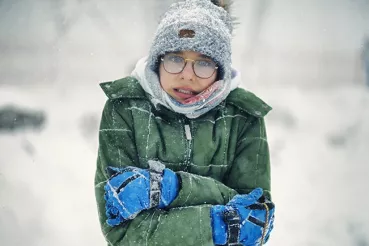Because every second counts during a stroke, RUSH is testing an innovative program that allows a patient to be seen by a stroke specialist on the way to the nearest hospital.
Since its start in 2011, RUSH’s telestroke program has saved precious minutes for thousands of stroke patients by connecting a stroke neurologist at Rush University Medical Center with an emergency department team that doesn’t have a specialist on staff or available.
Now, RUSH is installing telestroke technology in ambulances so the crucial evaluation can begin even before the patient reaches the ED.
“Each minute can be the difference between life and death or disability,” said vascular neurologist Alejandro Vargas, MD, MS, who is leading the study.
For its pilot project, RUSH installed a tablet and telehealth technology in each of the Oswego Fire Protection District’s five ambulances and trained approximately 70 paramedics to gather detailed information the stroke neurologist needs to evaluate the patient remotely.
“We’re testing whether it’s feasible to do remote stroke evaluations in the back of an ambulance,” Vargas said. “We are not interfering with any prehospital care or changing the work flow of the emergency departments.”
The mobile telestroke evaluations are being done only for stroke patients who are being taken to the nearest stroke-certified hospital from a location more than 10 minutes away.
During this pilot phase, the in-ambulance evaluation doesn’t change where the patient is taken, but Vargas and team are studying whether and when the evaluation could determine that a patient should be taken directly to a hospital that can provide more advanced treatment.
Why every minute counts
Stroke is the No. 1 cause of disability and the fifth leading cause of death in the United States. Every minute a stroke is left untreated, a patient loses nearly 2 million brain cells.
A stroke occurs when blood flow to the brain stops, cutting off oxygen to brain cells, most often because a blood vessel becomes blocked (ischemic stroke) or when a burst aneurysm or leaking blood vessel causes bleeding in the brain (hemorrhagic stroke).
Ischemic strokes can sometimes be stopped by a medication called tPA (tissue plasminogen activator) that dissolves blood clots and restores blood flow to the brain, but only if treated within four-and-a-half hours of the stroke starting. Larger ischemic strokes can be further treated by surgically removing the blood clot in a procedure called a thrombectomy.
But the neurologist first must know what type of stroke is taking place and other details of the patient’s condition to determine the safest and most effective options. For example, the “clot busting” medication can stop an ischemic stroke, but it could make a hemorrhagic stroke worse by increasing bleeding in the brain.
That’s why the sooner the patient can be evaluated, the better, even if it’s done just a few minutes faster in the ambulance than after the patient reached the hospital, Vargas said.
“Recognizing sooner which patients could have tPA administered or a thrombectomy, treatments that are known to improve outcomes after a stroke, could help reduce the time to treatment and increase the speed and accuracy of care,” Vargas said.
Paramedics are essential to preparing and assisting the patient for a telestroke consultation in the ambulance, he added. They must collect crucial information about the patient and be comfortable with the equipment in the ambulance, said Becki Zobel, RN, BSN, nurse coordinator of RUSH’s Mobile Telestroke Program.
Partnering with paramedics
Zobel is working with area emergency medical services and training paramedics to assist neurologists to make a more detailed assessment of patients using what’s called the National Institutes of Health Stroke Scale.
“We’re providing information and education on some important factors affecting stroke care, such as the importance of finding out when the patient was last known to be well, without stroke symptoms, rather than knowing only when the patient was found,” Zobel said. “We need them to find out caregiver contact information and medical history such as whether the patient takes blood thinners.”
Zobel trained the Oswego paramedics, and she will be training other southwest suburban departments that are being added to the program soon. The study, which is expected to last for two to three years, is focused on bringing the pilot to the communities surrounding Rush Copley Medical Center, as well as other hospitals that already turn to RUSH for telestroke consultations.
Both Rush Copley and Rush Oak Park Hospital are certified by the Joint Commission as primary stroke centers, meaning they perform certain advanced treatments, and the Rush University Medical Center is a certified comprehensive stroke center, which can provide the more complex treatments for stroke. While most strokes can be treated at the primary stroke centers, strokes that involve bleeding in the brain or that are being treated by surgically removing the clot need to go to comprehensive stroke centers.
The study will compare the mobile telestroke processes with standard emergency services procedures to identify where improvements to stroke care can be made.
Jack Taxis, EMS coordinator for Rush Copley, said he’s seen the benefit of the in-ambulance stroke evaluations, and the program is well-received.
“We’ve had phenomenal buy-in with the Oswego Fire Department and their paramedics,” Taxis said. “It increases knowledge, which they like, and they are seeing how the neurologist is doing things and that the patient is being seen more quickly.”




